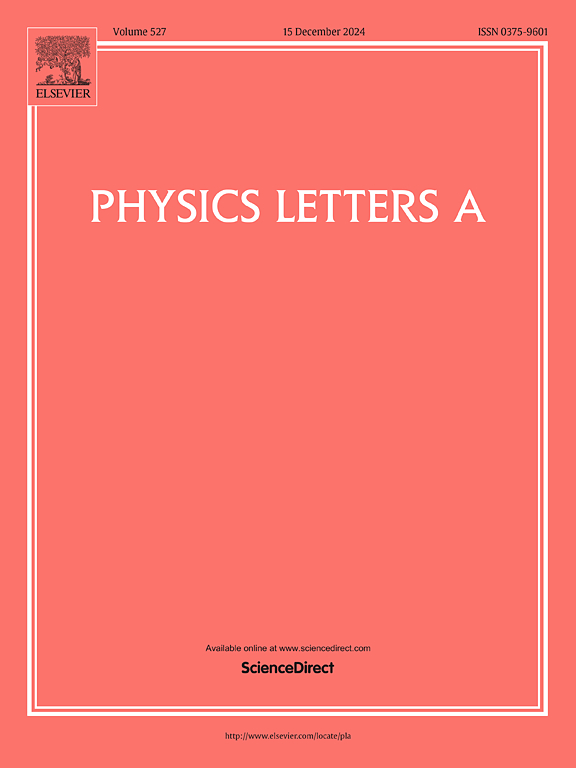基于1.55µm超透镜的全光逻辑门AND、OR、NOT、XOR和XOR
IF 2.6
3区 物理与天体物理
Q2 PHYSICS, MULTIDISCIPLINARY
引用次数: 0
摘要
本文提出了一种基于超透镜的高速光学逻辑门的新方法。逻辑门由两个或三个相位可控的超透镜组成,它可以对相同初始相位的多个入射光束施加不同的相位,使它们汇聚到一个共同的焦点上。这会产生干扰,从而实现逻辑操作。这项工作的优点包括超透镜的灵活相位控制能力,它打破了通常与光学逻辑器件相关的严格输入相位要求。此外,由于光主要通过空气传播,这提高了信息的传输速率。超透镜的小型化也为实现高效并行计算提供了一条潜在途径。可实现的逻辑门类型包括AND、OR、NOT、XNOR和XOR,理论对比度为39.51 dB (OR)、19.21 dB (AND)、11.45 dB (NOT)、11.54 dB (XNOR)和14.61 dB (XOR)。由于相同的结构,每个逻辑门的比特率稳定在1.04和1.05 Tb/s之间,占空比为50%。优异的性能和快速的传输速度验证了利用超透镜实现光逻辑门的可行性。本文章由计算机程序翻译,如有差异,请以英文原文为准。
All-optical logical gates AND, OR, NOT, XNOR and XOR based on metalenses at 1.55 µm
This paper presents a novel approach for high-speed optical logic gates based on metalenses. The logic gates consist of two or three phase-controllable metalenses, which can apply different phases to multiple incident light beams of the same initial phase, converging them to a common focal point. This generates interference, enabling logical operations. The advantages of this work include the flexible phase control capabilities of the metalenses, which break the stringent input-phase requirements typically associated with optical logic devices. Additionally, since light predominantly propagates through air, this enhances information transmission rates. The miniaturization of metalenses also offers a potential pathway for achieving efficient parallel computing. The achievable types of logic gates include AND, OR, NOT, XNOR, and XOR, with theoretical contrast ratio of 39.51 dB (OR), 19.21 dB (AND), 11.45 dB (NOT), 11.54 dB (XNOR), and 14.61 dB (XOR). Due to the identical structure, the bit rate for each logic gate stabilizes between 1.04 and 1.05 Tb/s at a 50 % duty cycle. The excellent performance and rapid transmission speeds validate the feasibility of implementing optical logic gates using metalenses.
求助全文
通过发布文献求助,成功后即可免费获取论文全文。
去求助
来源期刊

Physics Letters A
物理-物理:综合
CiteScore
5.10
自引率
3.80%
发文量
493
审稿时长
30 days
期刊介绍:
Physics Letters A offers an exciting publication outlet for novel and frontier physics. It encourages the submission of new research on: condensed matter physics, theoretical physics, nonlinear science, statistical physics, mathematical and computational physics, general and cross-disciplinary physics (including foundations), atomic, molecular and cluster physics, plasma and fluid physics, optical physics, biological physics and nanoscience. No articles on High Energy and Nuclear Physics are published in Physics Letters A. The journal''s high standard and wide dissemination ensures a broad readership amongst the physics community. Rapid publication times and flexible length restrictions give Physics Letters A the edge over other journals in the field.
 求助内容:
求助内容: 应助结果提醒方式:
应助结果提醒方式:


